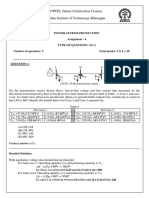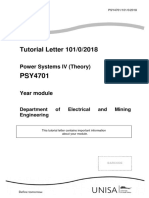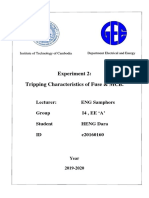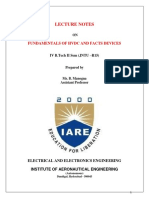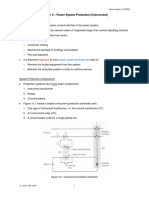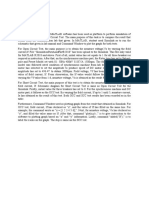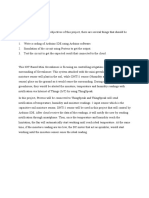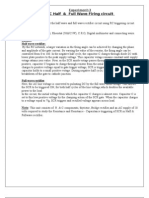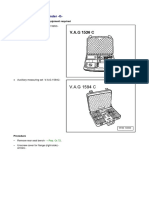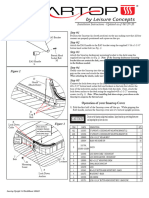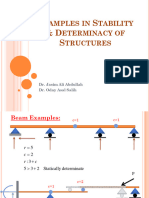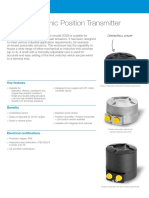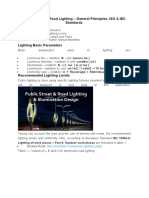0% found this document useful (0 votes)
367 views10 pagesPower System Protection (Differential)
Differential relays operate based on comparing the current entering and leaving a component. If the currents are equal, no internal fault is detected. But a difference indicates an internal fault and the relay will trip. Differential relays provide primary protection for generators, transformers and transmission lines. They operate very fast without coordination and with simple settings. The relay compares currents using either an electromechanical balance beam or current transformers and coils to detect faults internally. Proper CT ratios are selected to ensure no operation during no fault conditions and operation for internal faults above a set threshold.
Uploaded by
Aisamuddin SubaniCopyright
© © All Rights Reserved
We take content rights seriously. If you suspect this is your content, claim it here.
Available Formats
Download as PDF, TXT or read online on Scribd
0% found this document useful (0 votes)
367 views10 pagesPower System Protection (Differential)
Differential relays operate based on comparing the current entering and leaving a component. If the currents are equal, no internal fault is detected. But a difference indicates an internal fault and the relay will trip. Differential relays provide primary protection for generators, transformers and transmission lines. They operate very fast without coordination and with simple settings. The relay compares currents using either an electromechanical balance beam or current transformers and coils to detect faults internally. Proper CT ratios are selected to ensure no operation during no fault conditions and operation for internal faults above a set threshold.
Uploaded by
Aisamuddin SubaniCopyright
© © All Rights Reserved
We take content rights seriously. If you suspect this is your content, claim it here.
Available Formats
Download as PDF, TXT or read online on Scribd
/ 10












